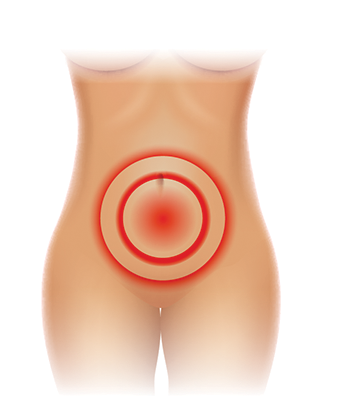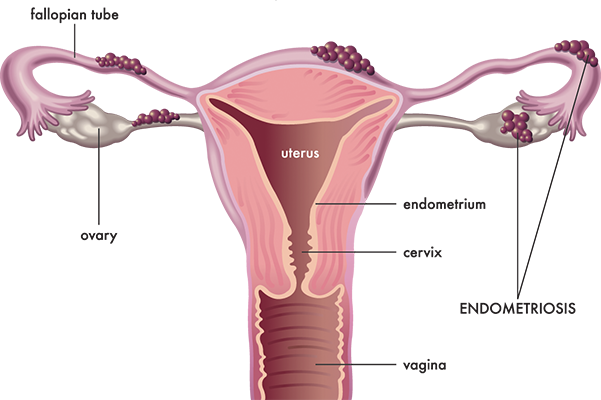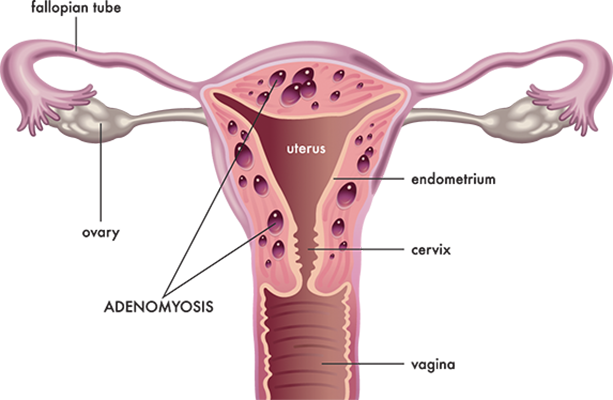Pelvic pain is pain that you feel in the pelvis, the area below the belly button. There are many causes which can be from any of the organs found in this area, including the:
- Bowel
- Bladder
- Uterus (womb)
- Fallopian tubes
- Ovaries
- Pelvic bones, muscles, or ligaments
Pelvic pain can be new (acute) or have been occurring for a long time (chronic).

Acute Pelvic Pain
New (acute) pain that comes on suddenly will need you to see your GP and they’ll be able to investigate the cause and arrange any treatment you may need.
Common causes of acute pelvic pain include:
- Constipation and irritable bowel syndrome
- Period pain
- Infections e.g. urinary tract or sexually transmitted
- Appendicitis and peritonitis
- Ovarian Cyst or Endometriosis
Chronic Pelvic Pain
Chronic pelvic pain is pain that has been occurring for 6 months or more. This can be a regular pain (e.g. related to periods) or irregular pain.
Common causes of chronic pelvic pain include:
- Endometriosis and/or Adenomyosis
- Recurrent urinary tract infections
- Prolapse of womb, bladder, and/or bowel
- Fibroids
- Inflammatory Bowel Disease e.g. Crohn’s, Ulcerative Colitis
- Hernia
- Trapped or damaged nerves in the pelvic area
What Is Endometriosis?
The lining of the uterus (womb) is called the endometrium. Endometriosis occurs when the cells from the endometrium are found growing in other places in your body. This is usually in your pelvis, around your uterus, ovaries, and fallopian tubes.
The most common symptoms of Endometriosis are:
- Pelvic pain
- Painful periods (see info on painful periods)
- Pain after or during sex
- Pain when you open your bowels or pass urine – often worse during your period
- Bleeding from your bowels or bladder during your period
- Difficulty becoming pregnant
- Extreme tiredness (fatigue)

Endometriosis is a common condition, affecting up to 10 in 100 women. The cause of endometriosis remains unknown however, you are more likely to develop endometriosis if your mother or sister has had it.
What Is Adenomyosis?
The lining of your uterus is called your endometrium. Adenomyosis occurs when the cells that normally line the uterus grow in the walls of the uterus. This can make the uterus bigger.
The most common symptoms of Adenomyosis are:
- Heavy periods
- Painful periods
- Pain in the lower belly
- Pain during sex
- Bloating, heaviness or fullness in your belly (abdomen)

Adenomyosis is more common in women over the age of 30 but can affect anyone who has periods.
What Should I Do If I’m Experiencing Pelvic Pain, Or I Am Concerned?
Pelvic pain can happen for many reasons, ranging from mild to severe. It might go away before your GP can figure out what’s wrong or could be a sign of something more serious.
If you experience intense pelvic pain suddenly, it may need immediate medical attention and could require a hospital visit for diagnosis and treatment. Ongoing pelvic pain is usually less urgent and often doesn’t require hospitalisation for diagnosis or treatment.
Remember, always pay attention to the severity and duration of the pain and seek medical advice if you’re concerned!
If you are experiencing chronic pelvic pain, you feel this is affecting your daily life and ability to work please complete this short questionnaire.